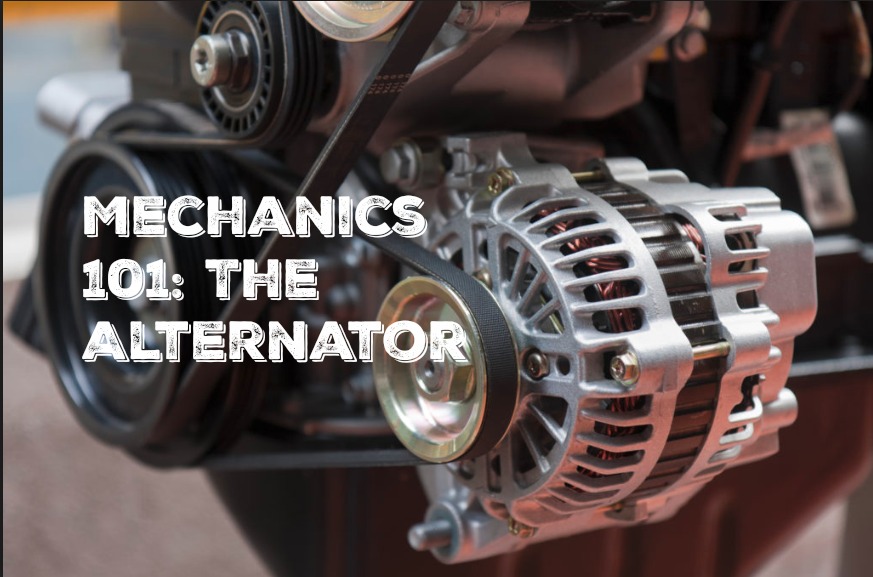These 23 Halloween Party favors will be perfect for your Halloween Party! Check them out:

Pumpkin Spice Play Dough “Cupcakes”
Halloween Paint Chip Bookmarks

Halloween Friendship Bracelets
Adorable Halloween Treat Boxes



These 23 Halloween Party favors will be perfect for your Halloween Party! Check them out:

Pumpkin Spice Play Dough “Cupcakes”
Halloween Paint Chip Bookmarks

Halloween Friendship Bracelets
Adorable Halloween Treat Boxes




If you are like other families , you may consider cutting the cord on cable. We have been looking at making the change, and trying to save money on our entertainment budget. But whats the best choice? We already subscribe to Netflix, and Hulu, we have a lot of options for watching the shows and movies that we love. But what is the best option for streaming these services?
We tried out the Google Chromecast where you can watch movies, shows, live TV, YouTube, and photo streaming all from your T.V. -or household devices!

When you take your vehicle in to be serviced it can sometimes be a bit intimidating. Cars can be quite expensive to maintain, and unfortunately a lot of them require special tools and equipment to repair. A lot of people aren’t prepared for the costs or time it takes for repairs and service – so making sure to empower yourself with the information, knowledge and confidence to make sure you know what is going on and what you are getting into is a smart move to make. There are a few questions that you can ask your mechanic to feel confident in your repairs and their service. It can also help you avoid paying too much and avoid unnecessary repairs.
 This post is sponsored by Robert’s Chrysler Doge RAM Fiat.
This post is sponsored by Robert’s Chrysler Doge RAM Fiat.
Can I Meet the Mechanic?
If you ask to meet the mechanic you can put a face with the name – and a name with the experience. If you ask what they drive, how long they’ve worked there, and some about their experience, it can go a long way building a great relationship. It also shows your mechanic that you care about your car (and him) and it can really benefit you. Be sure to also ask if you can ask for that mechanic specifically if you feel more comfortable with them.
Can I See What the Problem Is?
This is a pretty important question – unfortunately there are times when some mechanics take advantage of people, so when you are getting to know your dealership or service company, having them take you into the shop and show you it does reduce the risks of anyone trying to pull the wool over your eyes. Even if you don’t understand all the parts of the car or how things work, this will really help. If they won’t show you the problem or give you a full explanation then you probably want to find someplace else to have your vehicle fixed.
Can You Help Me Prioritize a List?
Sometimes when you bring a car in, it can have multiple things wrong. .and sometimes it’s just not in your budget to fix them all at once. If you can have the mechanic or service adviser help prioritize a list that – from vital and on down, you can work on getting things repaired in the correct order. Most of the time the top things on the list are safety related repairs. They will also give you an idea of things that need taken care of to prevent further damages.
What Happens if I Don’t Get the Repairs Done?
Most of the time mechanics will tell you what will happen if you don’t get the repairs they recommend completed. Just be sure it is a mechanic you can trust, because some shops can blow repairs out of proportion when really its minor repair that can be done at a later time. However you do want to make sure that you take heed to mechanics that you trust, because not getting repairs done can sometimes cause damage that’s irreversible or a very serious safety hazard.
Is There Any Type of Warranty on This Repair?
There is no such thing as a perfect part or sometimes even a perfectly done repair job. Things go wrong – it can happen. Just be sure that when you get a repair done (especially if its costly) that you have some type of warranty. The best type they can offer is covering both parts and labor – and make sure you have the terms of it as well (exactly what is covered and for how long) and of course always get it in writing.
Hopefully this helps take some of the mystery out of car repair for you – or at least make you better equipped to handle situations that may come your way. Remember, when in doubt, ASK!
Most of us have a general idea of the name of parts that keep our vehicle running; and some of the most common ones that need replaced or repaired; but do you know what those specific parts actual do, and how they function? We are going to do a mechanics 101 series that gives you a break down of car part basics – starting with the alternator.
So you know that your car’s alternator is an important part of the mechanical function – but do you know exactly what it does and how it could fail?
 This post is sponsored by King Buick GMC.
This post is sponsored by King Buick GMC.
The car alternator is one of the most commonly known car parts but most people don’t know exactly where it is ,or what it does, let alone how it could fail on you. Most alternators are located near the engine – near the front -and mounted on a bracket and is works by using a serpentine belt or sometimes an accessory belt.
The function of an alternator is pretty simple- and important – it provides electrical power to the entire vehicle. It also keeps the battery properly charged while the vehicle is running. So pretty much it converts the mechanical energy into electrical energy. Which is why when your car won’t start the first 2 guesses to the problem is either the battery or the alternator.
So how it runs specifically, is the serpentine belt rotates the pulley of the alternator. The pulley is attached to the rotor inside the alternator. The rotor spins inside something called the stator – which is a rotating magnetic field of the rotor – that induces electricity into the stator and that is what produces the alternating current power.
So before the vehicle can use the alternating current it actually needs to be converted – and that is done by a component called a bridge rectifier. It’s pretty much a series of one way electrical check valves that converts the AC into DC.
So output of energy – the normal output is from about 13 to 14 volts which is regulated by an internal component called a voltage regulator that again, is inside the alternator (now you know why they can get expensive) some vehicles doe have a separate computer that regulates it though.
How an Alternator Fails
There are a number of ways that an alternator can fail – the most common failure is an internal failure and that covers actually quite a wide variety of components. So normally when this happens you’ll start to get warning lights on your dash (again, this is why you don’t ignore those lights! They are there for a reason! And never let them go for too long or you can actually end up causing more damage thus costing you more money).
So just so you know, the vehicles does a self test of your entire system when you first turn the key so the battery light usually will come on then – but if it doesn’t turn off – or comes on while you are driving – then there is an issue.
Accessories can also stop working – modern cars are smart and can deactivate systems that aren’t vital to your cars operation. Like the AC until or 4-wheel drive are some of the first things that will shut off. Also any type of dim light output, like headlights or dash/interior lights aren’t as bright as they should be. So usually you will get that battery light along with some other warnings when the vehicle starts shutting down some systems.
The most familiar failure is the dead battery – sometimes it is an alternator issue, sometimes its a bad or worn out battery. If your car is slow or won’t start, this can be a sure sign that your alternator is not charging the vehicles battery. But there are plenty of other things that can cause that issue too – like the serpentine belt, or alternator pulley can cause similar issues.
When it comes to cost, it can vary depending on the issues. It can be a couple hundred to a couple thousand – check with your dealerships service department for a quote.
Sometimes it’s hard to determine when your windshield gets chipped or cracked, if you should repair or replace the damaged windshield. No matter where you may live, your windshield is exposed to damage whether it be a rock from the truck in front of you, hail damage, or even a baseball when you are parked at your child’s little league game.
I have had minor damage from pebbles, to a full en caved windshield when a limb from a tree fell right on it. Whether it’s minor or major, it’s important to make sure to take care of the damage right away. You can contact your dealerships service department to schedule a replacement or repair right away.

REPAIR OR REPLACE?
Good news is that smaller chips and cracks can usually be repaired by a professional, and if you have comprehensive insurance on your auto policy, they will usually waive your deductible for a repair. Even if you don’t have it, repairs are a lot cheaper than a replacement. If a chip or a crack is smaller than a dollar bill, it is typically safe to do a repair.
If the chip or crack is right in the driver’s line of sight however, or if there are multiple chips/cracks, or if the damage is towards the edge of the windshield, most likely it will need to be replaced versus repaired. The reason being is that the windshield is actually a very important structural part of most vehicles and contributes to the overall strength of a car – meaning not repairing or replacing a windshield can actually be unsafe. I took a CE class one year for my insurance license that showed us the difference in damages when a car rolled in an accident had a structurally sound windshield and one that didn’t. It was amazing the difference. So it is very important to repair cracks before they grow and your windshield must be completely replaced. (I was also told that original windshields have a higher safety impact than replacement windshields – so definitely repair whenever possible).
HOW A REPAIR WORKS
The repair process works by injecting a special resin in the chipped area. For cracks, holes may be drilled at each end of the crack to help prevent it from spreading. Windshields are actually made of three layers: a layer of resin or polymer is sandwiched between 2 pieces of glass.
If your windshield does need repaired make sure to get it done asap! A small chip can spread with weather change, a bumpy road, or even taking a turn too hard. Most states also will give you a ticket if you drive with a cracked windshield.